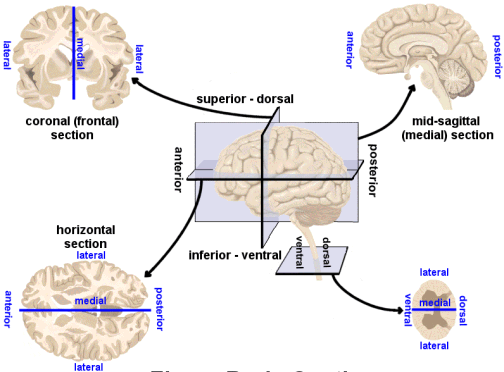
Name ___________________________ Date ______________
The Living Environment Regulation
Brain Morphology
The Total is Greater than the Sum of its Parts: Shapes & Functions within the Brain
The brain is thought by many to be the “final frontier” in studying the human body. While it is still very much a mystery, physicians and scientists over many years have discovered that different regions of the brain are responsible for different aspects of cognition (thinking), consciousness (awareness), and regulation (responding to both your internal and external environment). While research and discoveries continue to answer many questions about this organ, our job today is to examine these different regions, and often the best way to make sense of the structures and their respective functions is to hold a model of it in your hands.
Here’s a brief introduction to the components you will build and assemble today:
n Cerebrum = largest part of the brain, divided into two symmetrical halves (hemispheres); responsible for activities including reasoning, learning, sensory perception, and emotional responses
· Cerebral Cortex = the wrinkled outer layer of the cerebrum that is divided into 4 lobes: frontal, parietal, occipital, and temporal (named for the bones of the skull that protect each region); functions such as sensation, comprehension, and memory are associated with different locations
n Spinal Cord = thick cable of nerve tissue extending from the base of the brain through the spinal column
n Pons = a whitish band of nerve fibers on the surface of the brainstem/ spinal cord
n Hippocampi (plural 2) = two curved ridges of brain tissue located in the floor of the cavity within the cerebral hemispheres (closest to the temporal regions); concerned with emotions and short-term memory
n Corpus Callosum = a think band of nerves that connect the two hemispheres of the cerebrum
n Cerebellum = located directly behind the cerebrum and primarily responsible for coordination of muscular activity and maintaining balance; shaped like two small round-ish hemispheres connected by a thin central region
n Medulla oblongata = the lowermost part of the brain; it is continuous with the spinal cord and controls involuntary vital functions… [what examples can you think of?]
Examples: _____________________
_____________________
Establish a Color Code for your materials: color in each box with the representative color clay

Build and Assemble
Divide up the work; assign different regions to each group member
Use the pictures provided [or the brain atlas] to guide the shapes and sizes of each part
Once each part is shaped, assemble the pieces according to the pictures/ brain atlas
Answer the Following (in complete sentences):
1) Based on your knowledge of nerves and the brain, would you expect the overall brain to contain mostly sensory neurons, interneurons, or motor neurons? Are there areas that may contain more than one type of neuron? Explain you answer (it should be about 4-6 sentences in length):
__________________________________________________________________________
__________________________________________________________________________
__________________________________________________________________________
__________________________________________________________________________
__________________________________________________________________________
__________________________________________________________________________
__________________________________________________________________________
2) a) Write the name of one of the regions of the brain here: ______________________ b) Based on what you’ve read, what effect on the organism might you expect to see if this region of the central nervous system (CNS) was impaired by an injury?
__________________________________________________________________________
__________________________________________________________________________
__________________________________________________________________________
__________________________________________________________________________
__________________________________________________________________________
Next, listen for directions about how to section your group’s brain.

After viewing both types of sections, answer the following questions in complete sentences:
3) List some factors that could alter what you do or do not see in each section:
__________________________________________________________________________
__________________________________________________________________________
__________________________________________________________________________
4) If you were given a single slice of brain tissue, why is it important to know the location and type of section?
__________________________________________________________________________
__________________________________________________________________________
__________________________________________________________________________